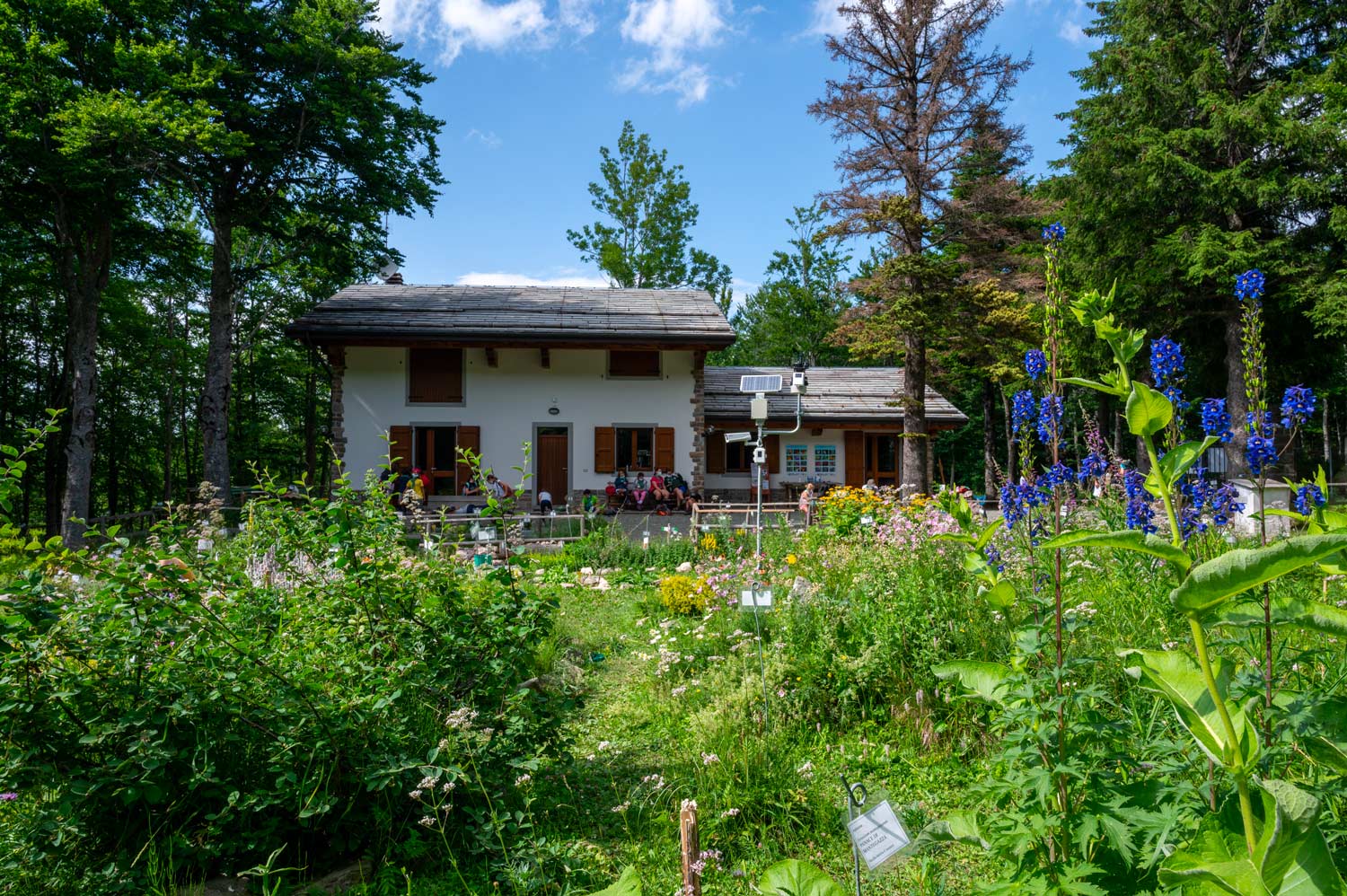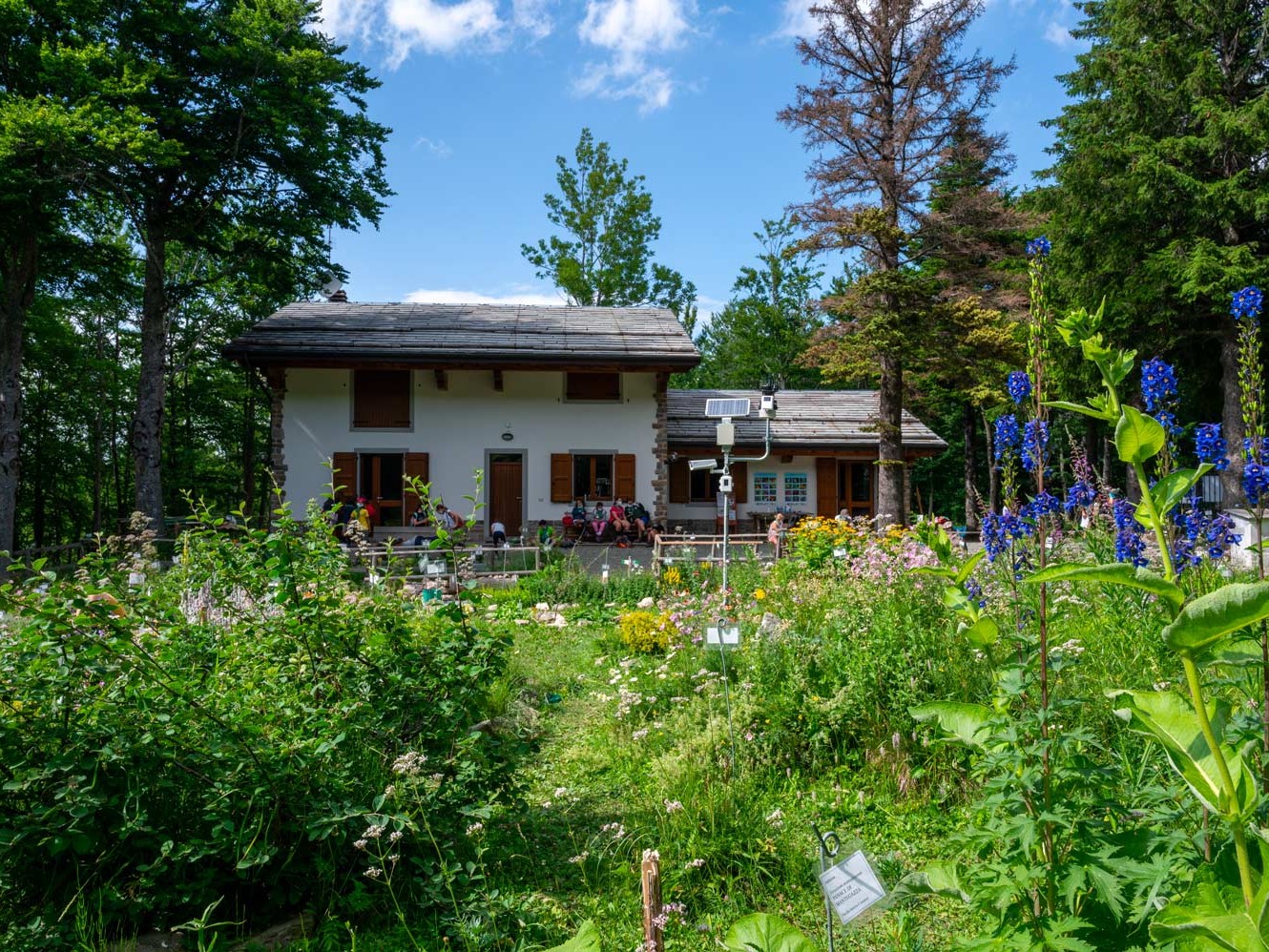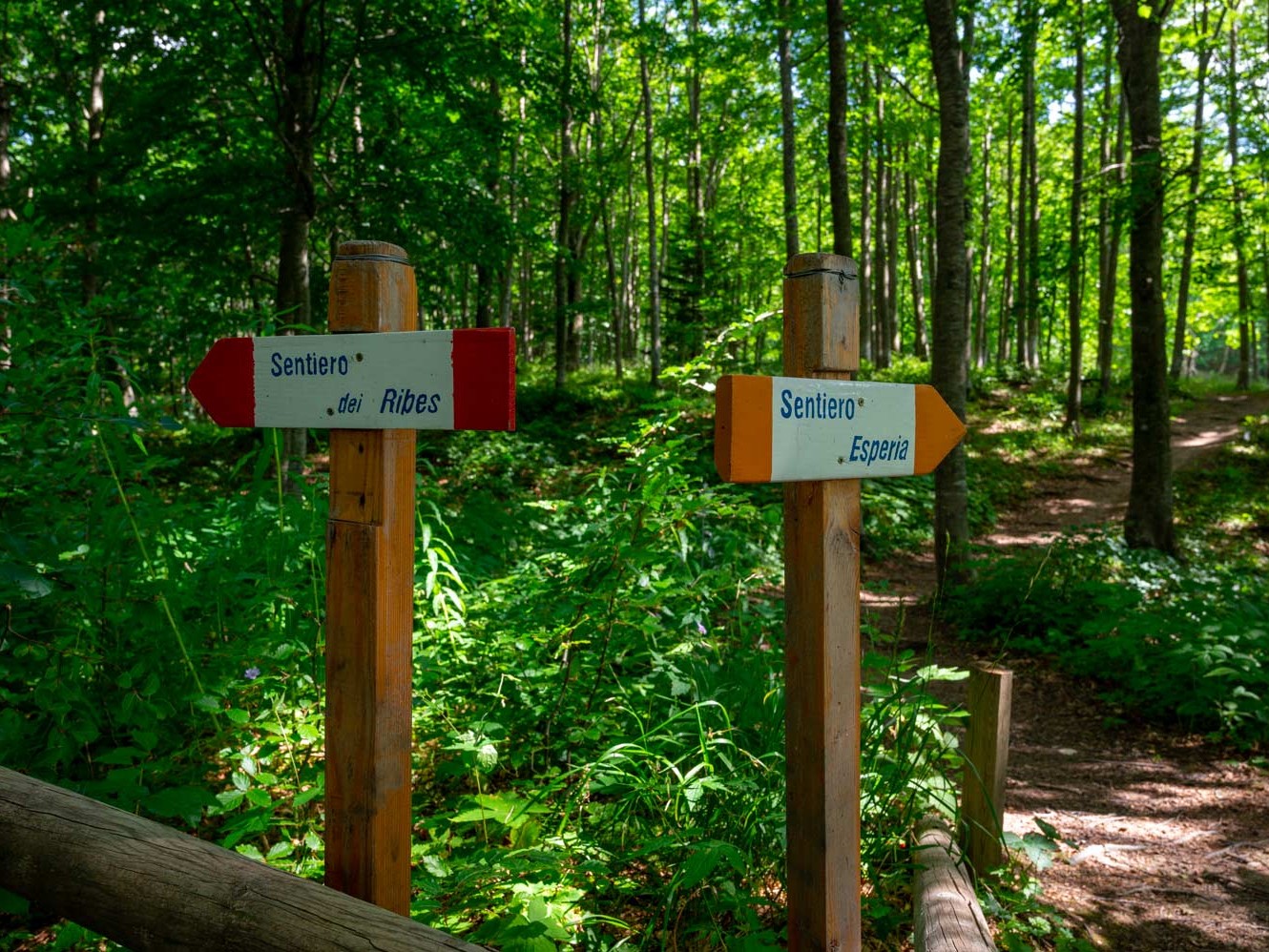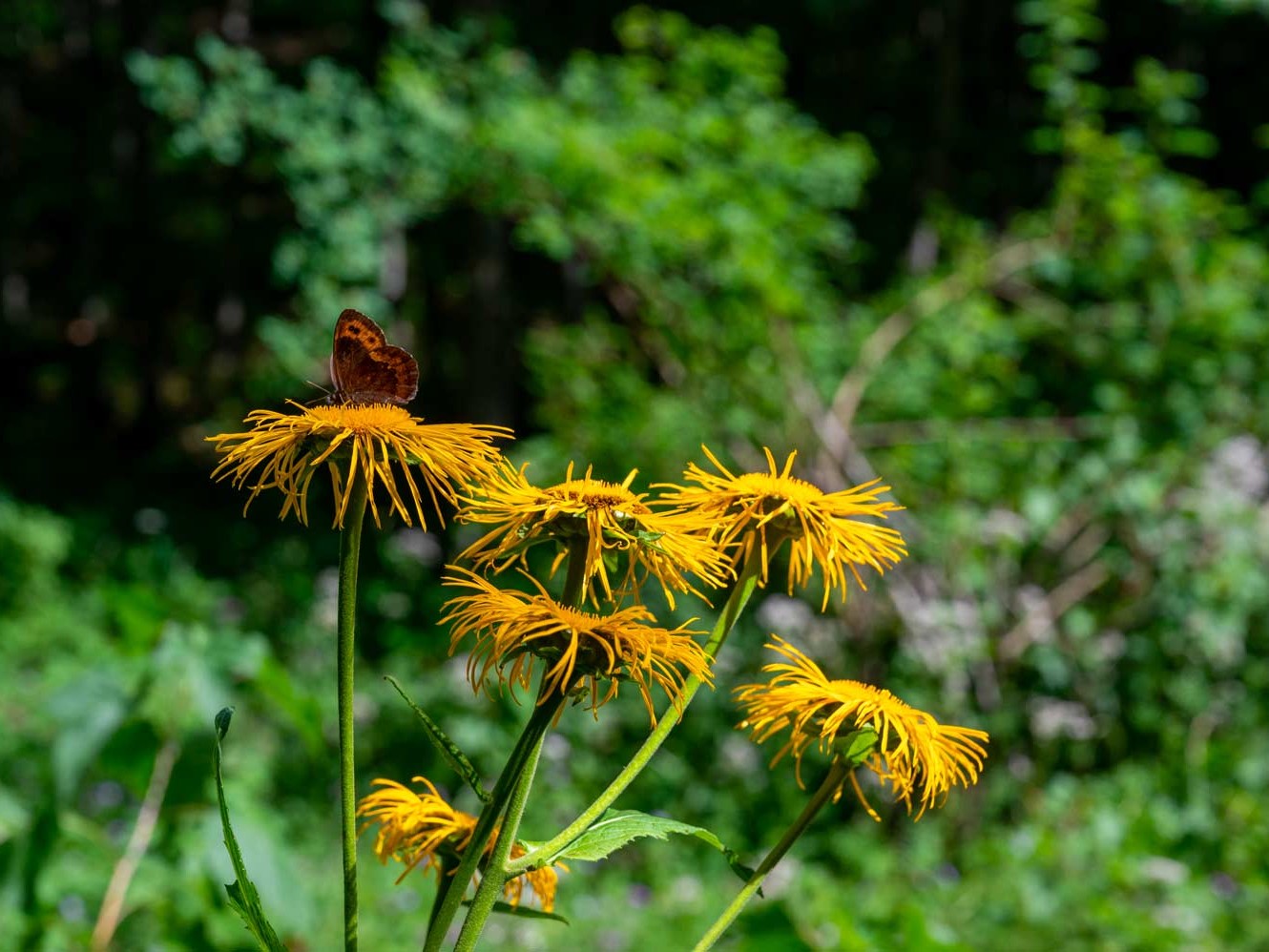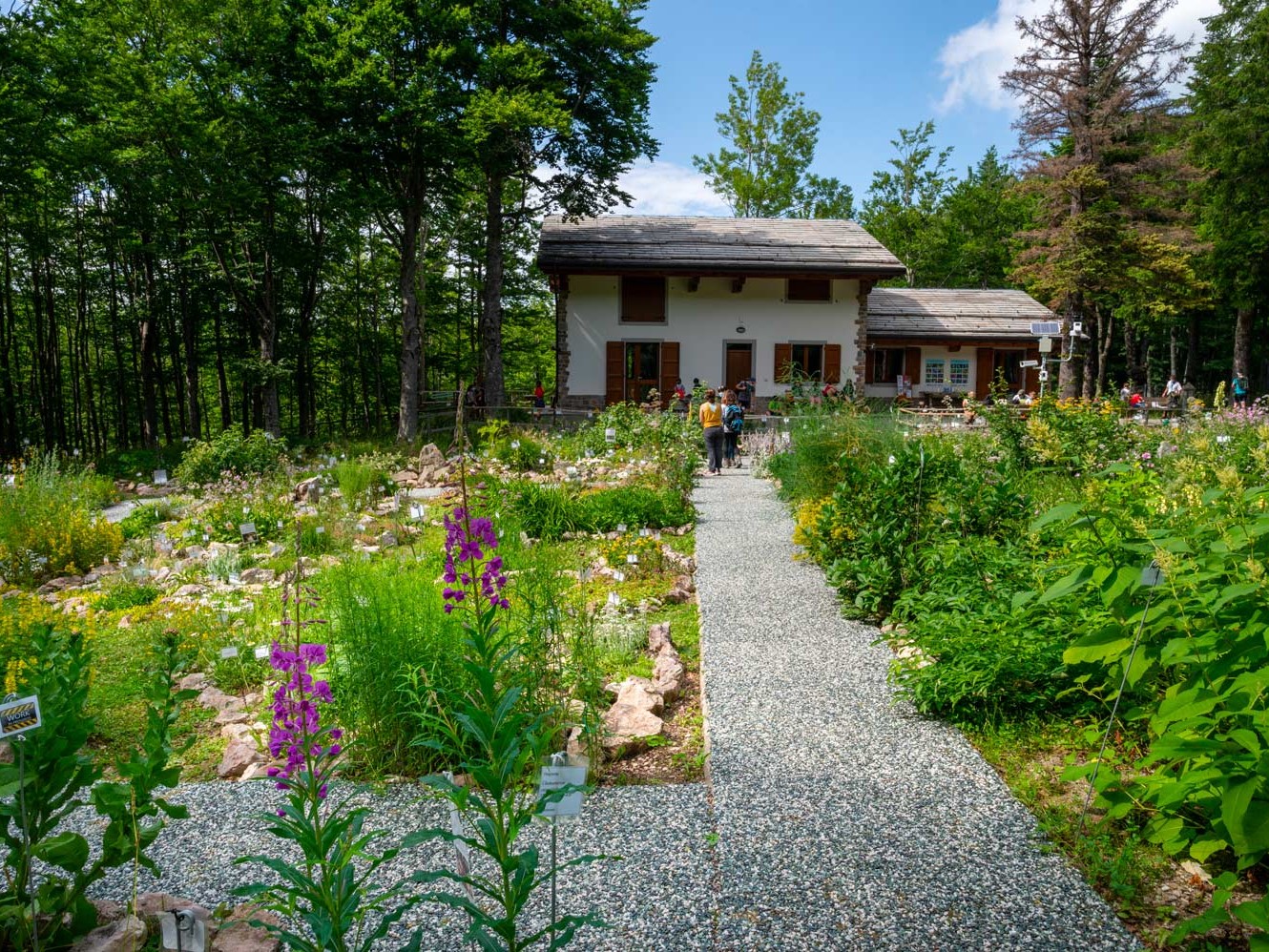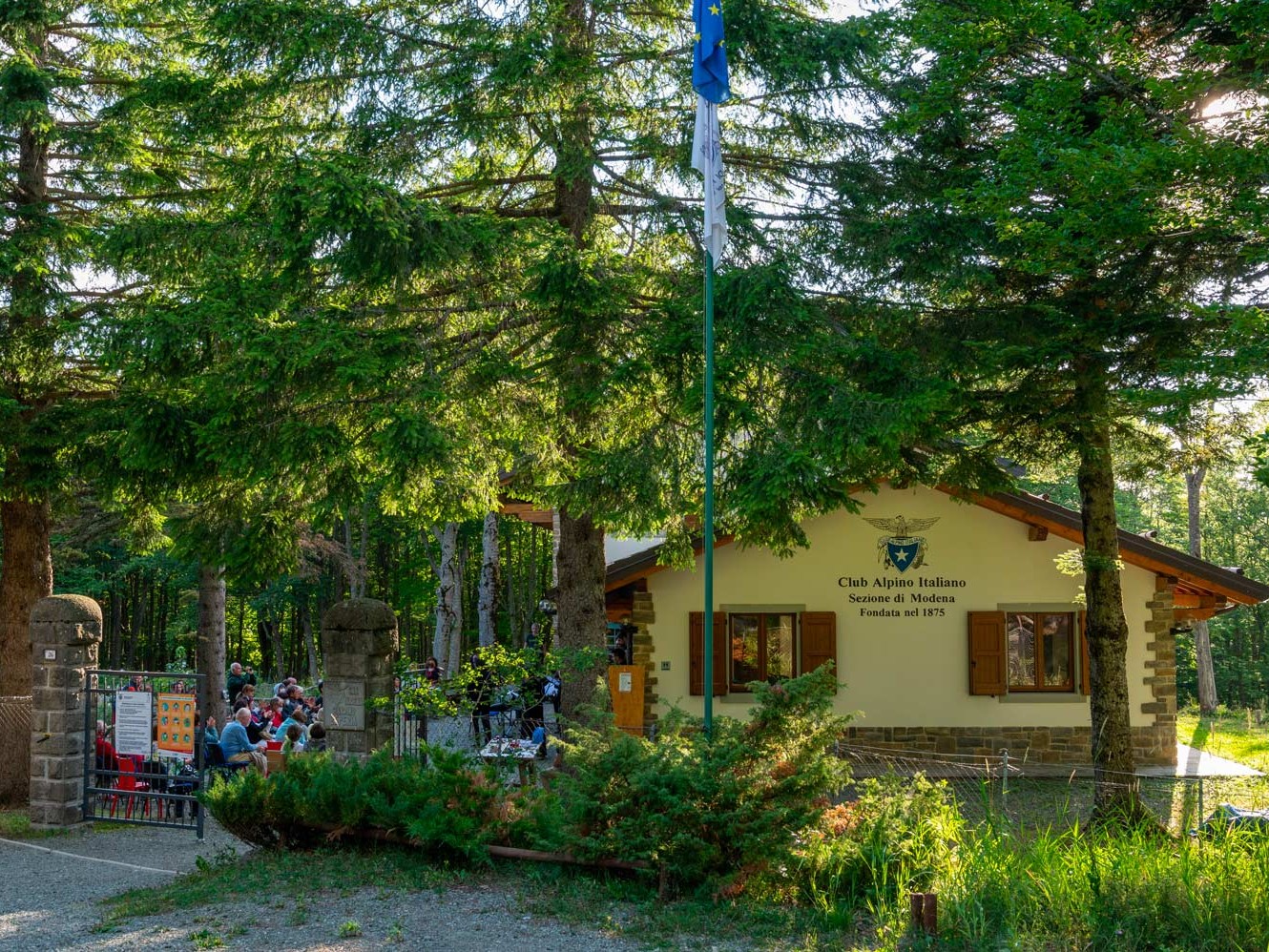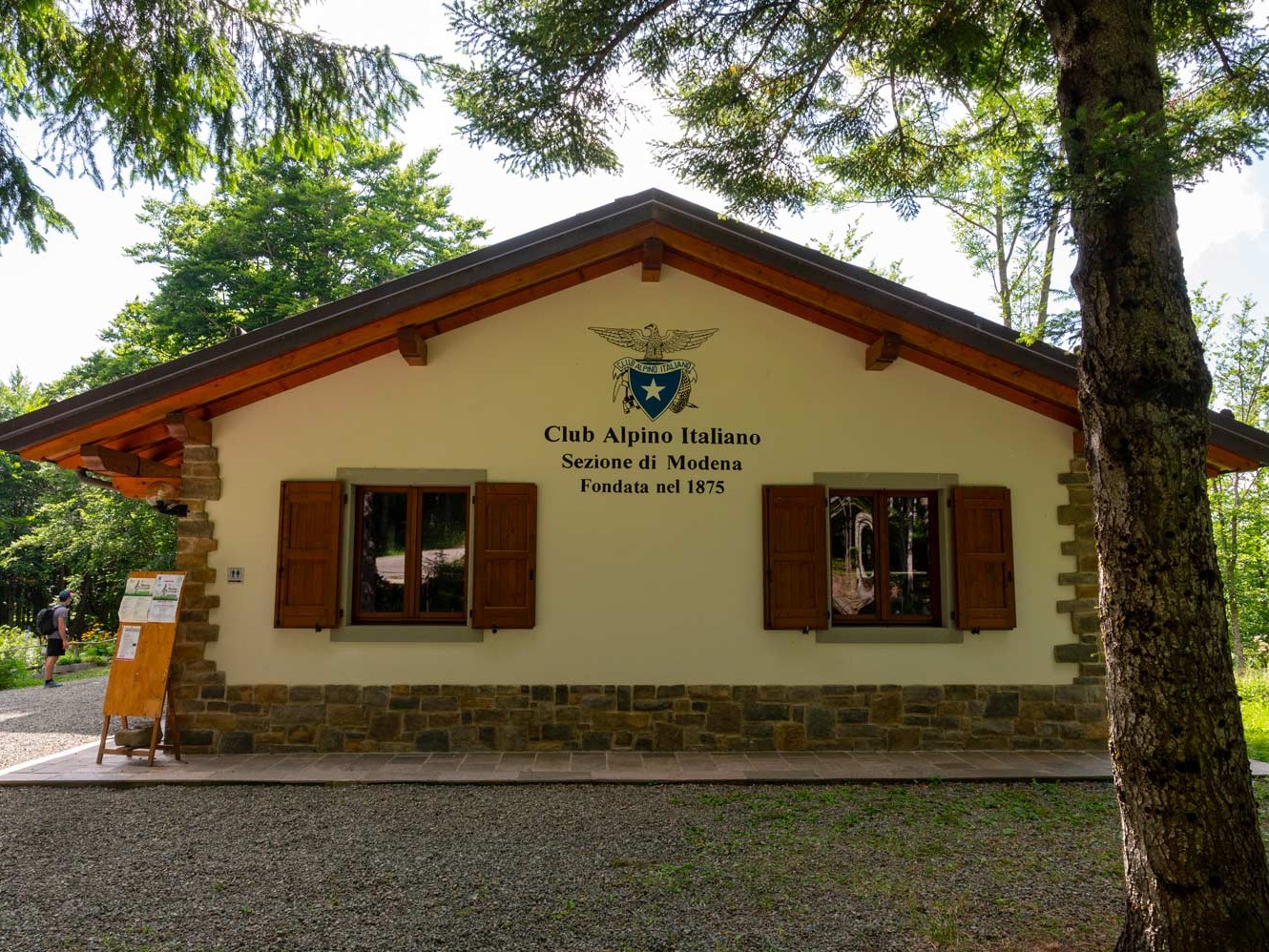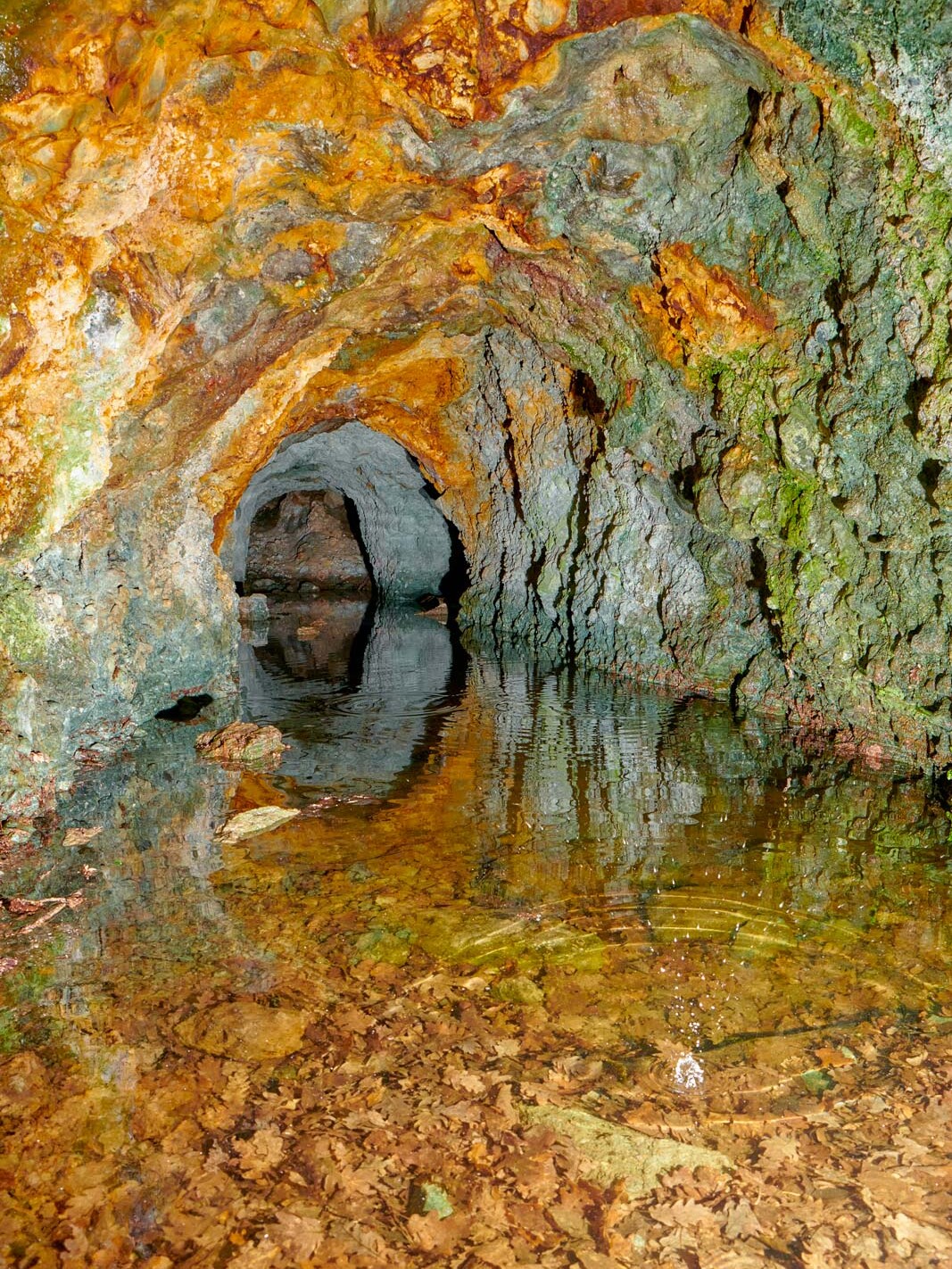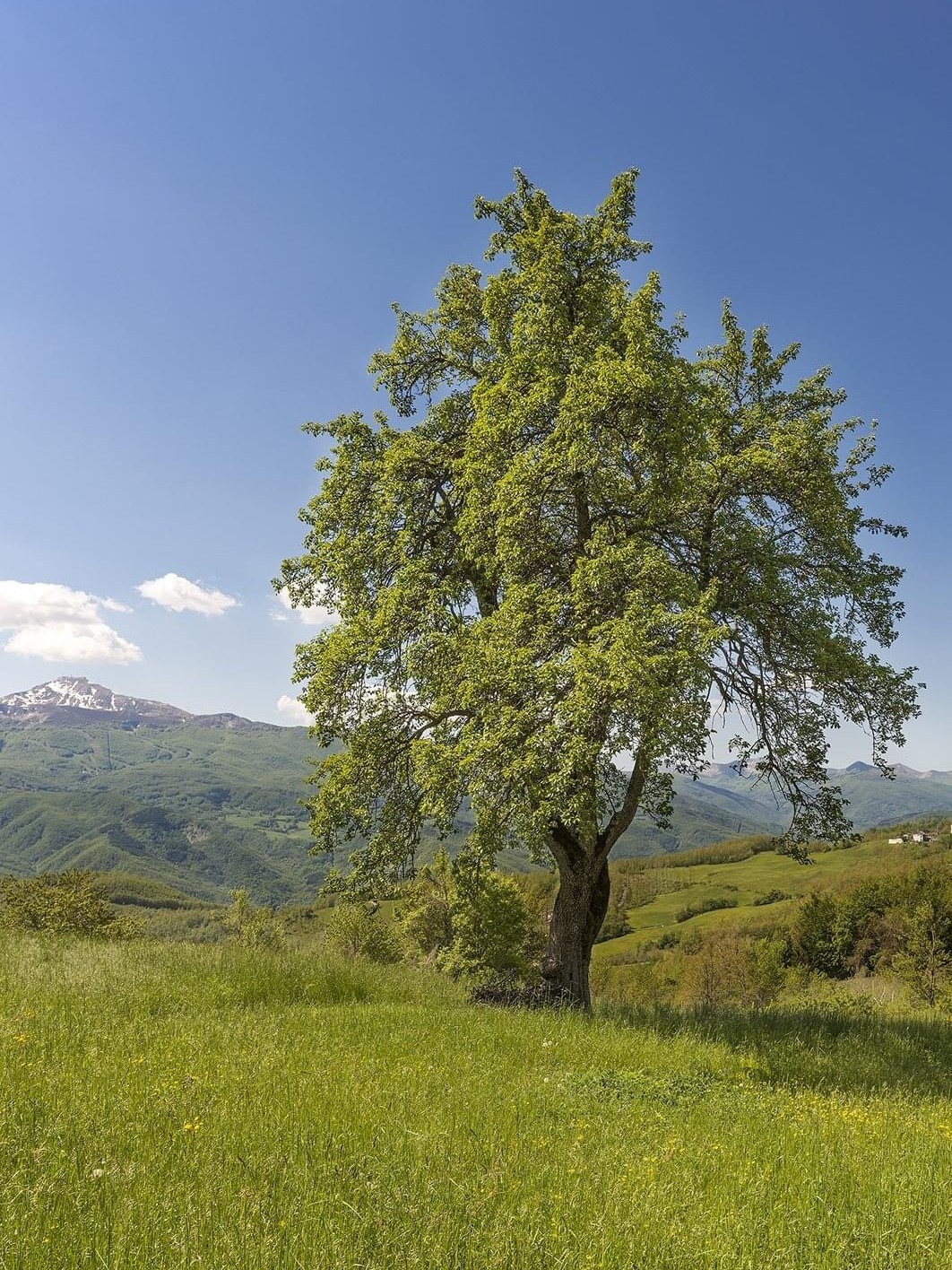The only one of its kind in the whole of the Modena Apennines, the Esperia Botanical Gardens are situated at Passo del Lupo, near Lago della Ninfa (Nymph’s Lake), at an altitude of 1,500 metres.
According to the organisation BGCI (Botanic Gardens Conservation International), a botanical garden is an institution open to the public that keeps a well-documented collection of living plants with the aim of promoting:
– scientific research
– the conservation of plant biodiversity
– sustainability awareness, scientific education and knowledge
Why “Esperia”
In mythology, Hesperia was a marvellous garden (a kind of ‘garden of the gods’), which stood on the edge of the Western World. In the garden there was a tree bearing golden apples, which bestowed immortality. The tree had been a wedding gift from Mother Earth to Hera upon her marriage to Zeus, and was tended by the Hesperides nymphs, daughters of Atlas. It was defended by a fierce, hundred-headed dragon, later killed by Hercules in his eleventh labour. Hesperia was also the ancient Greek name for Italy. The symbol of the Garden is the martagon lily (Lilium martagon), one of the most beautiful and striking species in the forest clearings of the Italian mountains (protected by LR 2 of 24/1/77).
A little bit of history
Plans to create the Garden date back to the 1930s and were promoted by the Scientific Committee of the CAI (Italian Alpine Club) Section of Modena and Professor Emilio Chiovenda, former Director of the Botanical Garden of the University of Modena. It was officially established in 1954, as an Experimental Herbalist Centre for ‘optimising mountainous and hilly terrain, today uncultivated or with low productivity levels, to be achieved through the regeneration and improvement of pastures, as well as through the cultivation of medicinal and aromatic plants for distillation, wherever these prove to be economically useful’.
The Centre remained in activity until the 1960s, followed by a period of decline, until it was almost forgotten.
During the 1980s, the Modena section of the Italian Alpine Club (CAI) was responsible for the Garden’s ‘rebirth’ and transformed it from a simple ‘herb garden’ into a beautiful ‘flower garden’.
A treasure trove of biodiversity
The Garden covers an area of about five acres, set within a beautiful beech forest characterised by a rich undergrowth. In addition to beech trees, you can observe tree and shrub species indigenous to the northern Apennines, as well as non-native varieties. It is also home to numerous herbaceous plants from different kinds of terrain – from marshes and wetlands, to pastures and glades, to rocks and scree slopes.
A series of easy pathways runs throughout the woods, interconnected by sturdy wooden bridges crossing over a network of small streams. In the shadier parts of the wood, there are welcoming benches strategically placed to offer visitors a moment’s rest.
The path running through the rockery flowerbeds is suitable for the elderly and people with disabilities.
The paths that lead through the garden allow you to immerse yourself in various natural habitats, each illustrated by a panel describing the ecological characteristics and the main species present.
Opening times/seasons
Giugno – Settembre
Come arrivare al Giardino Botanico Esperia
A 4 Km oltre Pian del Falco, un vasto parcheggio accoglie la vostra auto, ed a pochi metri si trova il Giardino; – per chi ama camminare: – da Sestola, sentiero C.A.I. 451 o comunale 6; – da Fanano, sent. C.A.I. 443; – da Roncoscaglia, sent. C.A.I. 457; – da Montecreto, sent. C.A.I. 459 o 461.



